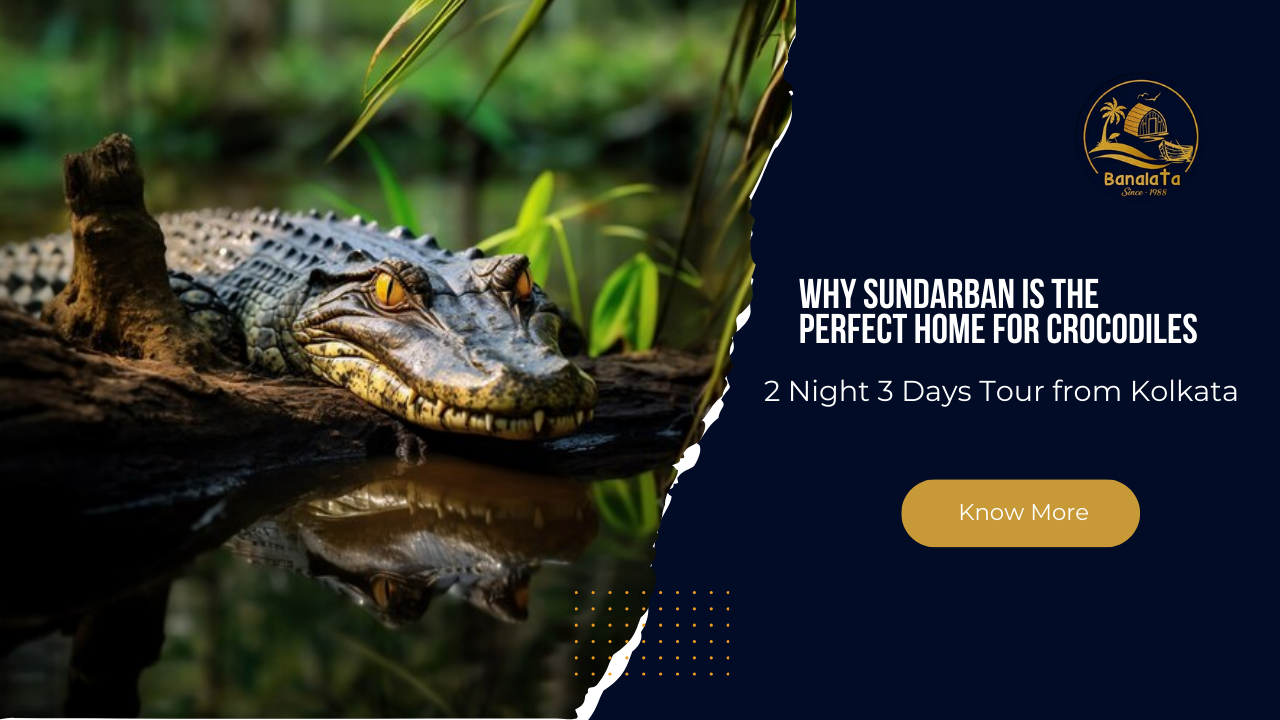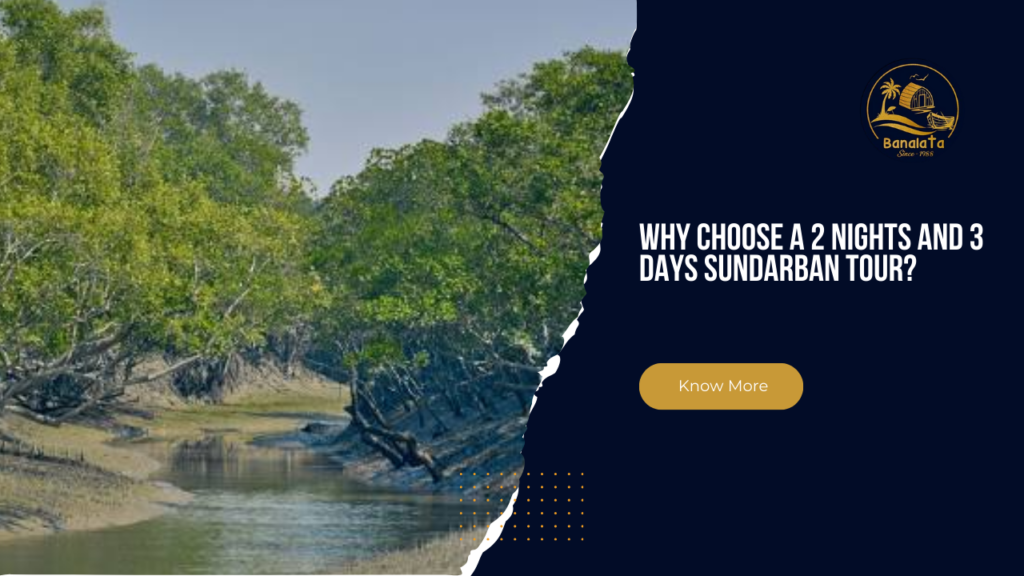The Sundarbans, a UNESCO World Heritage Site and the largest mangrove forest in the world, is an incredible natural wonder located in the delta region of India and Bangladesh. It is home to a rich diversity of flora and fauna, with one of its most iconic inhabitants being the estuarine crocodile, also known as the saltwater crocodile.
This vast expanse of mangroves, interwoven with numerous waterways, creates the ideal habitat for these mighty reptiles. In this article, we’ll explore why the Sundarban is the perfect home for crocodiles and provide an insight into their ecosystem.
The Estuarine Crocodile: A Fascinating Predator:
The estuarine crocodile (Crocodylus porosus) is the largest living reptile, known for its incredible adaptability and hunting prowess. These crocodiles can grow up to 7 meters (23 feet) in length, and they thrive in the brackish waters and tidal rivers of the Sundarbans.
Their ability to regulate salt in their bodies allows them to survive in both fresh and saltwater, making the mangrove swamps an ideal habitat.
Why Sundarban is Ideal for Crocodiles:
The Sundarbans’ unique blend of ecosystems—mangroves, swamps, tidal rivers, and estuaries—creates the perfect environment for estuarine crocodiles. Here are several reasons why this region is an ideal home for these majestic predators:
1. Rich Biodiversity and Abundant Prey:
The Sundarbans is teeming with life. Its rich biodiversity offers crocodiles an ample food supply, including fish, crustaceans, birds, and small mammals. The estuarine crocodile is an apex predator, and the abundance of prey in this region ensures they thrive. The diversity of the ecosystem, which includes various species of fish and marine animals, makes the Sundarbans a paradise for these reptiles.
2. Protected Habitat:
The Sundarbans is part of a protected area where human activities are regulated. This helps conserve the habitat and ensure that crocodiles can continue to live and breed in a relatively undisturbed environment. The Indian and Bangladeshi governments, along with international wildlife organizations, work to preserve the Sundarbans and its inhabitants, providing a sanctuary for species like the estuarine crocodile.
3. Mangroves and Tidal Rivers:
The complex network of tidal rivers, estuaries, and dense mangrove forests provides an ideal environment for crocodiles. Mangroves offer the perfect cover for hunting and resting, while tidal rivers allow for easy movement. Crocodiles often bask on the mudflats, waiting for prey to pass by in the water, and the mangroves help protect them from harsh weather conditions.
4. Natural Adaptability:
The estuarine crocodile is incredibly adaptable. In the Sundarbans, where freshwater mixes with the sea, their ability to tolerate varying levels of salinity in the water allows them to thrive in environments that would be challenging for other species. The crocodiles are also known for their exceptional swimming abilities, allowing them to navigate the Sundarban waterways with ease.
Sundarban Tour Packages: A Gateway to Witness Crocodiles:
For wildlife enthusiasts and nature lovers, the Sundarbans offers a unique opportunity to witness estuarine crocodiles in their natural habitat. Banalata Tours & Travels provides well-curated tour packages that allow visitors to explore the majestic beauty of the Sundarbans and experience its wildlife up close.
Sundarban One Day Tour Package:
The Sundarban one day tour package is perfect for visitors who are short on time but want to experience the essence of the Sundarbans. The tour includes a guided safari that takes you through the tidal rivers and mangrove forests, offering a chance to spot estuarine crocodiles basking on the riverbanks or swimming through the water.
This package is ideal for those who want a quick yet fulfilling glimpse of the diverse wildlife in the region, including crocodiles, tigers, and various bird species.
2 Nights and 3 Days Tour Package:
For a more immersive experience, the 2 nights and 3 days tour package is highly recommended. This package allows travelers to fully explore the beauty of the Sundarbans, with multiple safaris and boat trips that increase the likelihood of spotting crocodiles in their natural habitat. Visitors will also get the chance to witness other wildlife, such as the Royal Bengal Tiger, various bird species, and even the rare Gangetic dolphin.
The package includes accommodation, meals, guided tours, and cultural experiences like the traditional Jhumur dance performance, making it an unforgettable adventure.
The Role of Crocodiles in the Sundarbans Ecosystem:
Estuarine crocodiles play a vital role in maintaining the ecological balance of the Sundarbans. As apex predators, they help control the populations of prey species, ensuring that no single species dominates the ecosystem. Their presence also supports the health of the mangrove forest by regulating the fish and marine populations, which in turn affects the growth of plant species.
Conclusion:
The Sundarbans is truly the perfect home for estuarine crocodiles, thanks to its rich biodiversity, protected status, and ideal environment. For those who want to explore this unique region and witness these magnificent creatures, Banalata Tours & Travels offers the perfect Sundarban tour packages.
Whether you opt for the one-day tour package or the other tour packages, you’ll have an unforgettable adventure exploring the home of the estuarine crocodile.
Book your trip today and experience the wild beauty of the Sundarbans firsthand!




